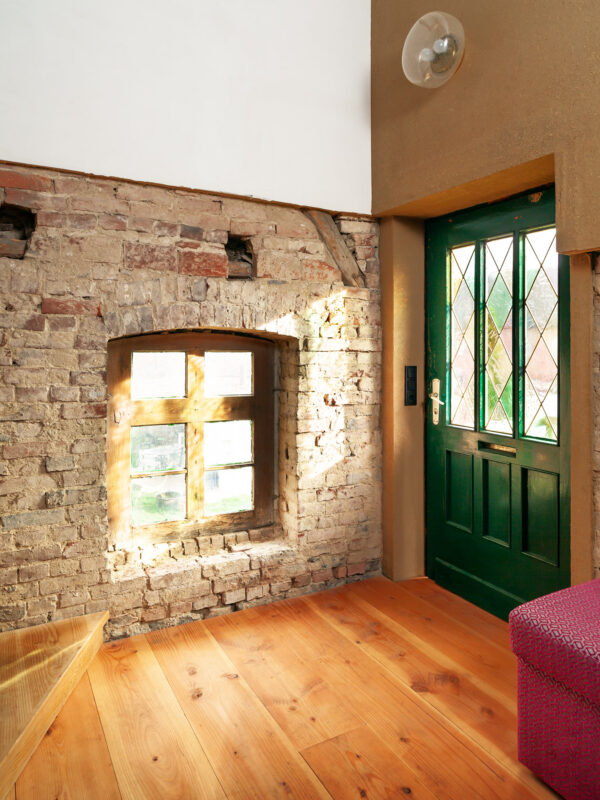
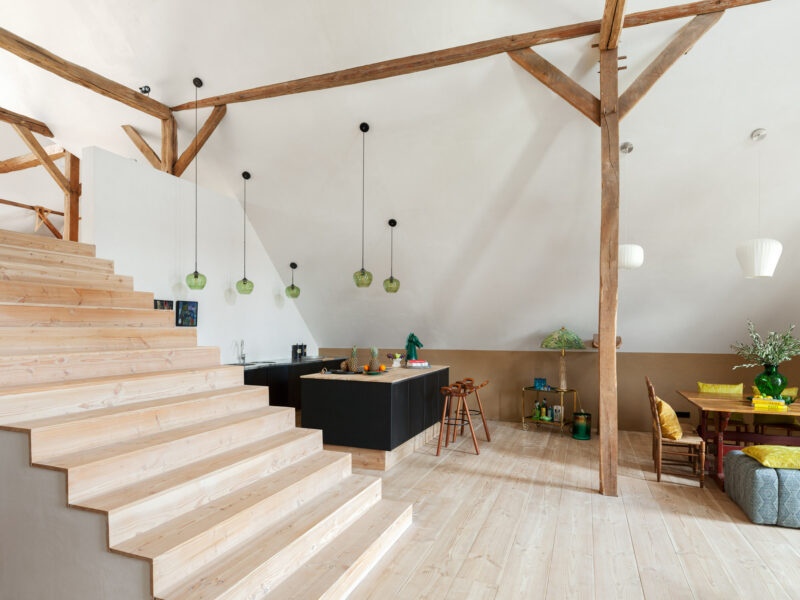
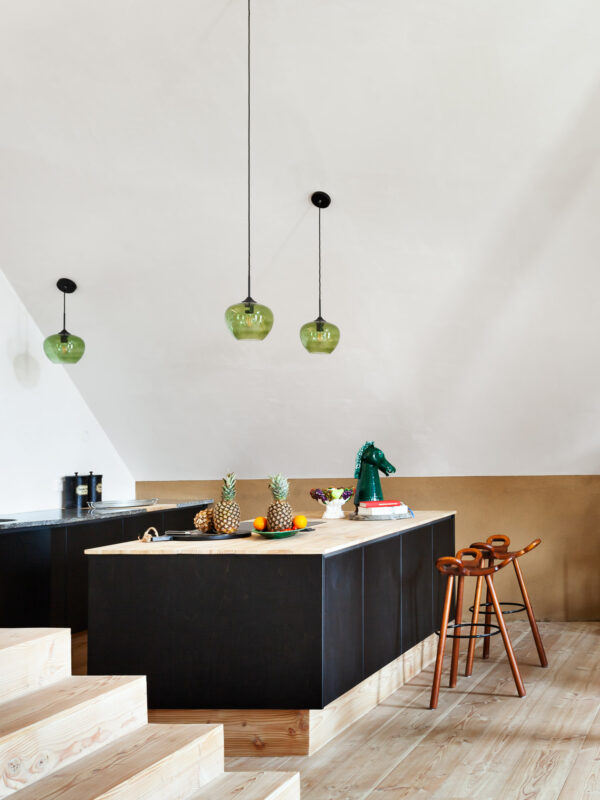
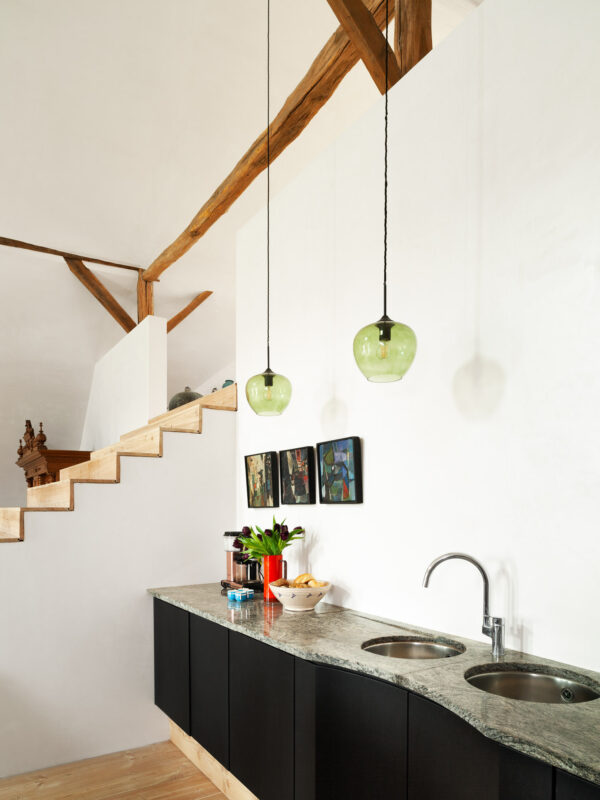
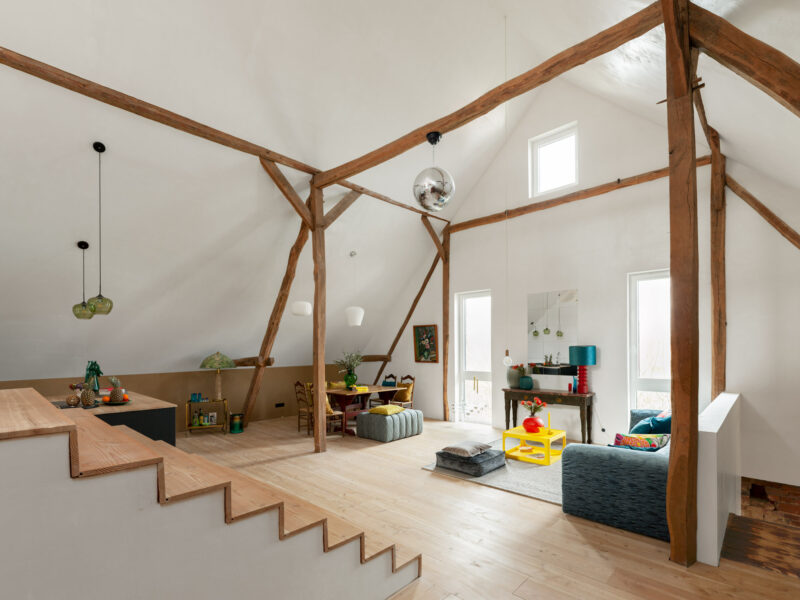
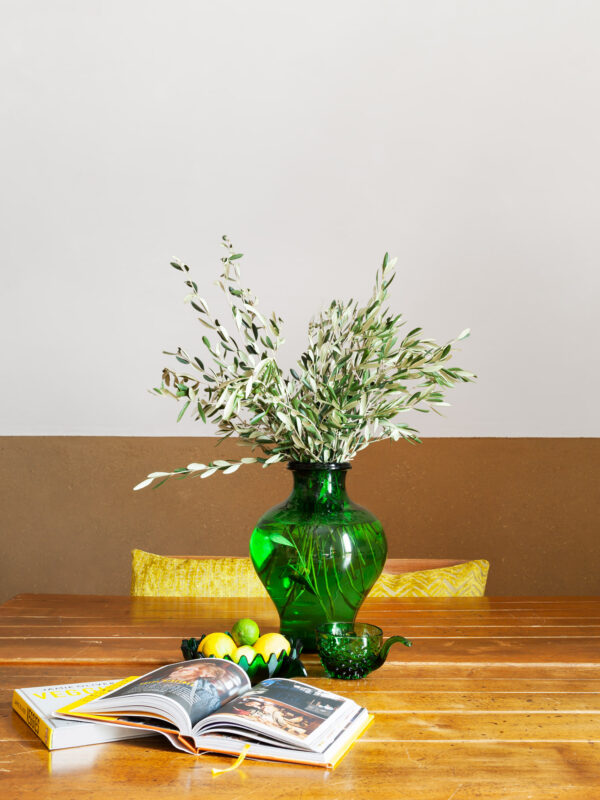
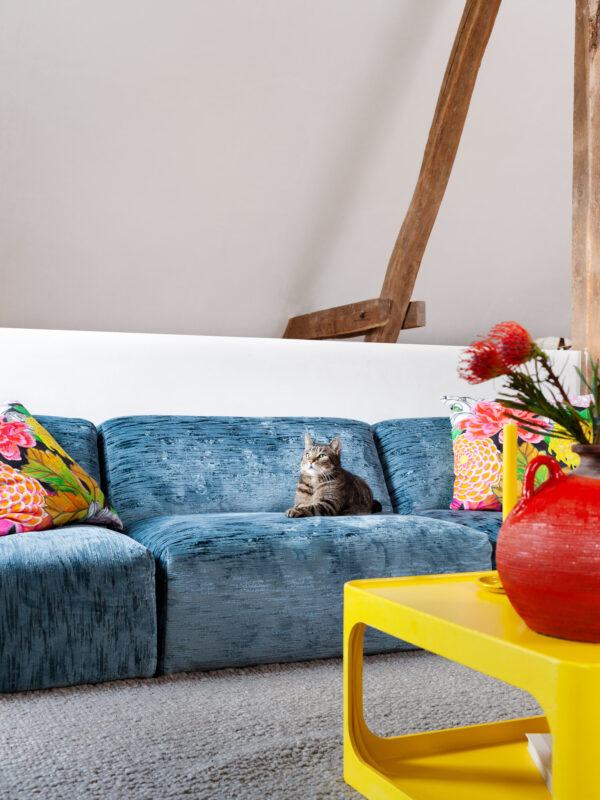
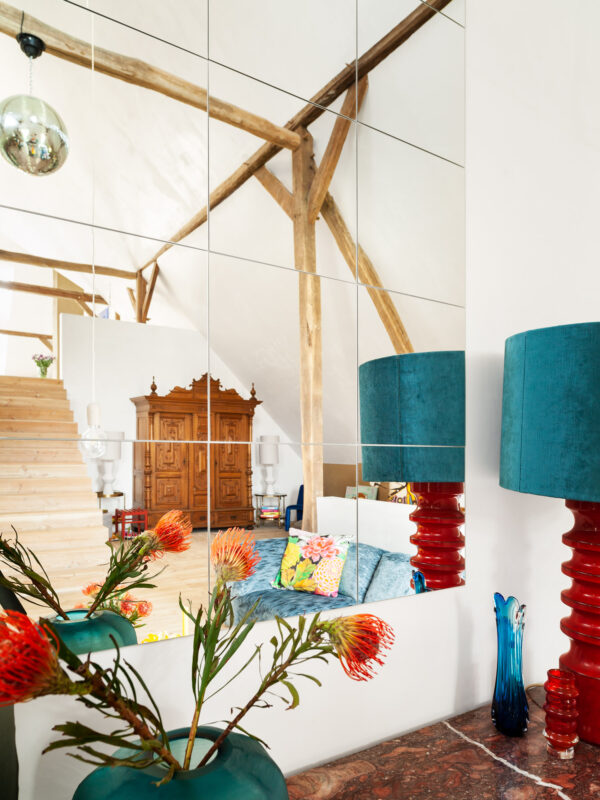
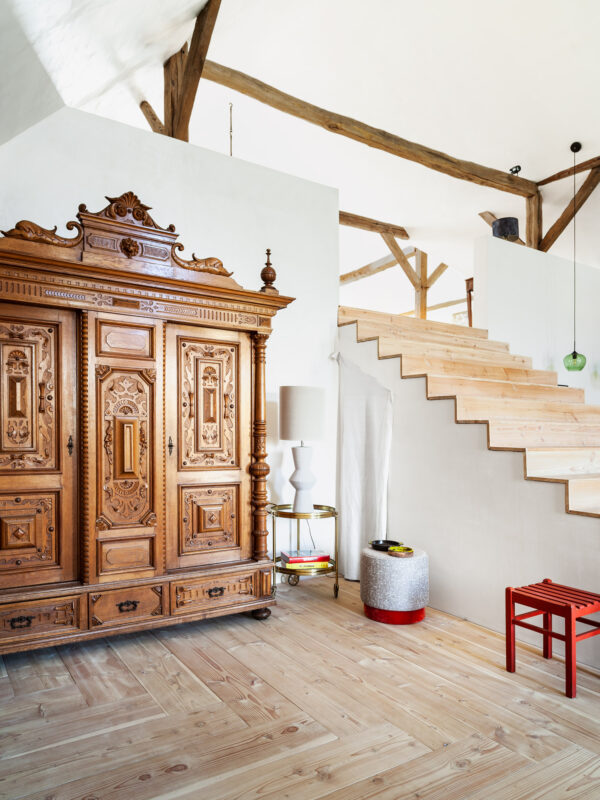
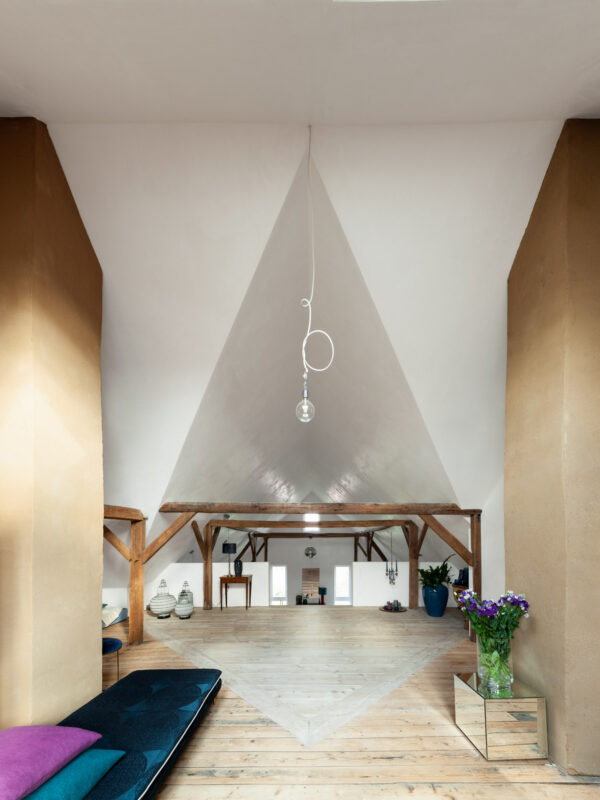
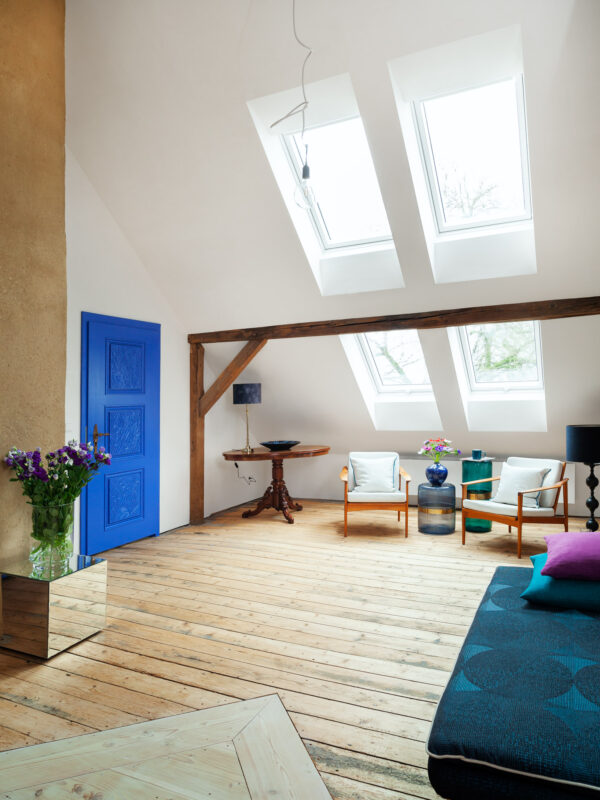
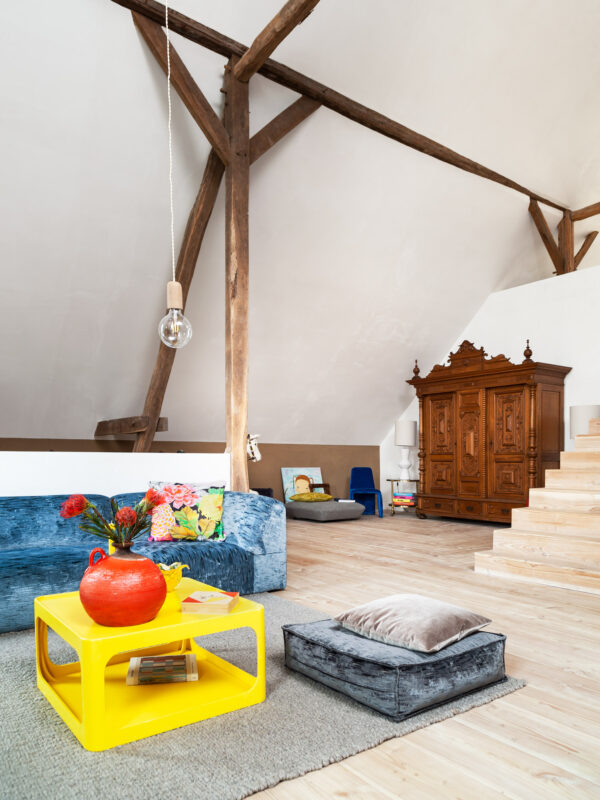
A 120-year-old barn in the Osnabrück region was converted into a loft by Raum & Zeit Interior Design. Now it serves as a studio, showroom, event location and holiday apartment.












A 120-year-old barn in the Osnabrück region was converted into a loft by Raum & Zeit Interior Design. Now it serves as a studio, showroom, event location and holiday apartment.
The grafting of fruit trees is a very old cultural achievement and, for a large number of fruit species, the only way to preserve and pass on varieties over generations. For example, the concept of the seed bank does not work for apples and pears: the corresponding variety must be preserved alive. For this purpose, the grafting technique was developed, in which, to put it simply, a part of the mother tree is transplanted onto a foreign root. Scion and rootstock grow together and develop into a tree. Pomarium is an ongoing work in which I visually explore this realm between nature and culture.
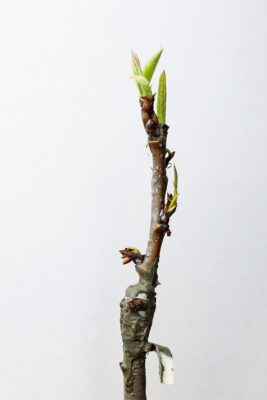
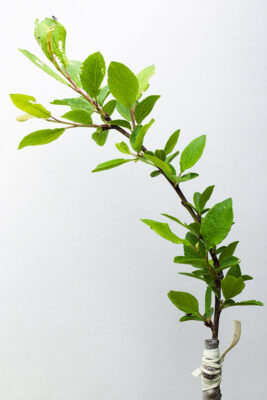
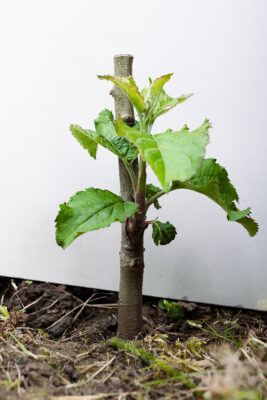
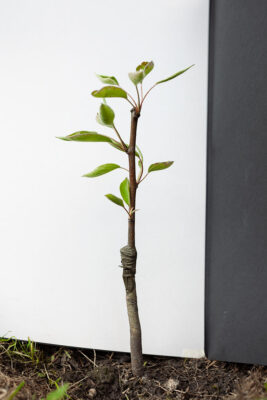
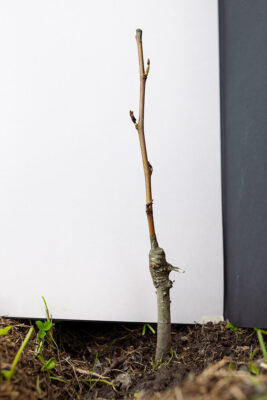
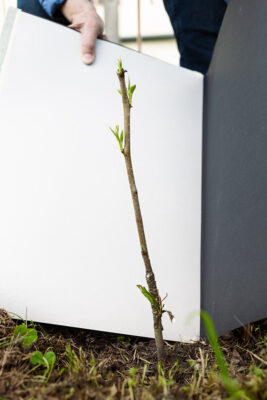
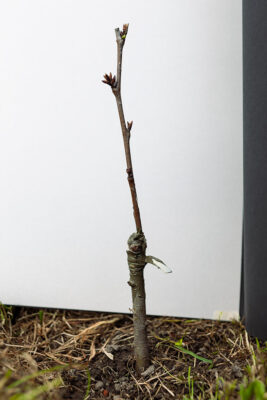
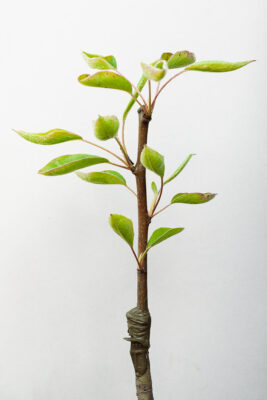
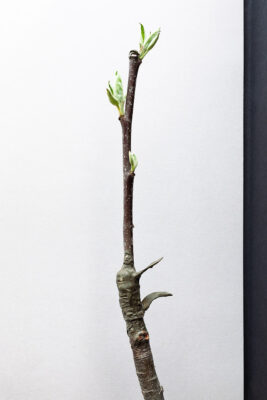
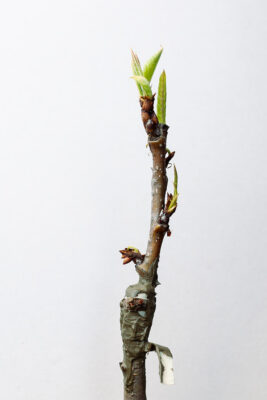
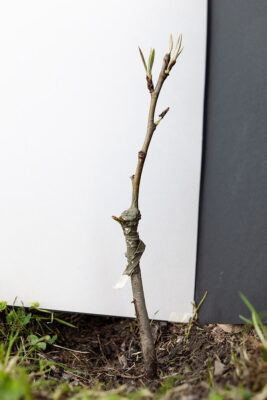
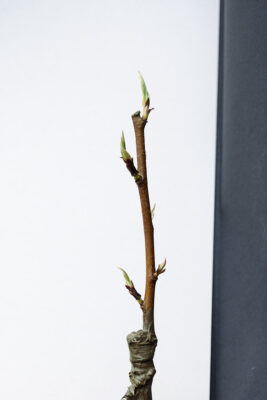
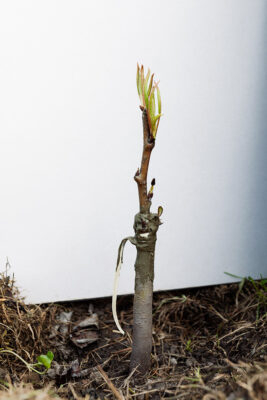
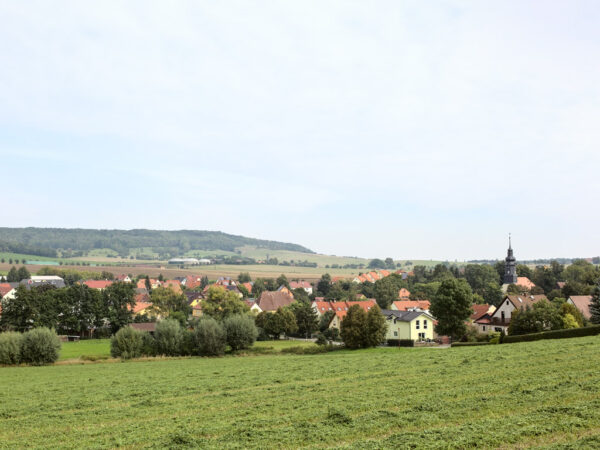
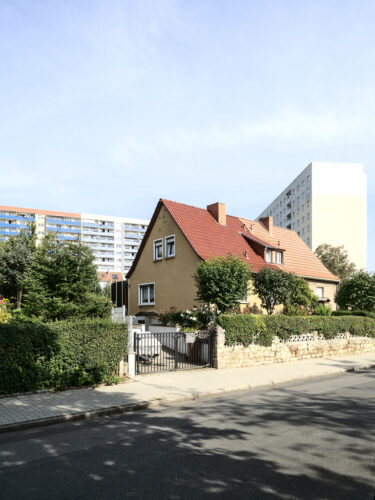
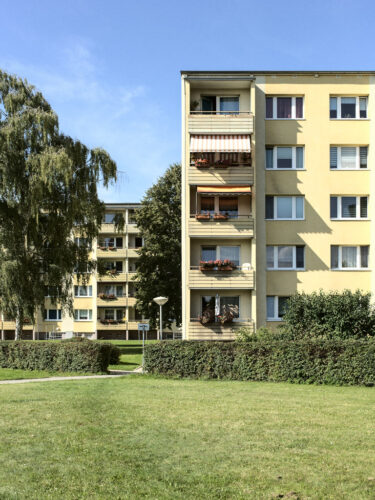
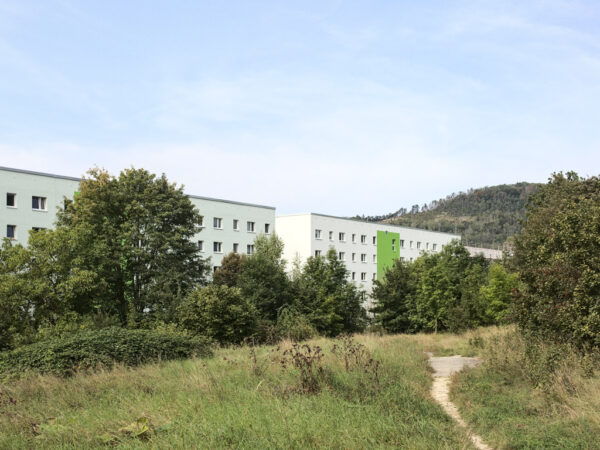
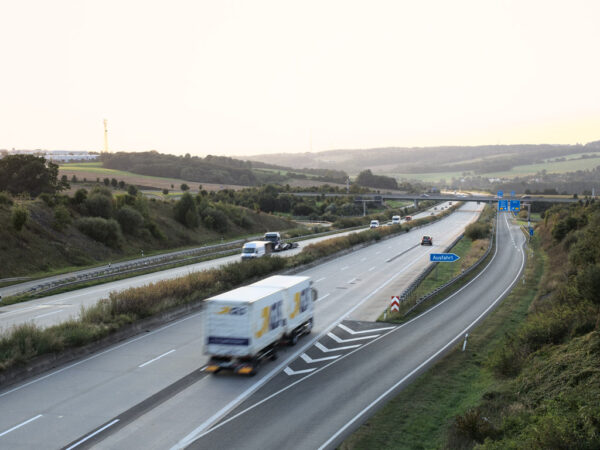
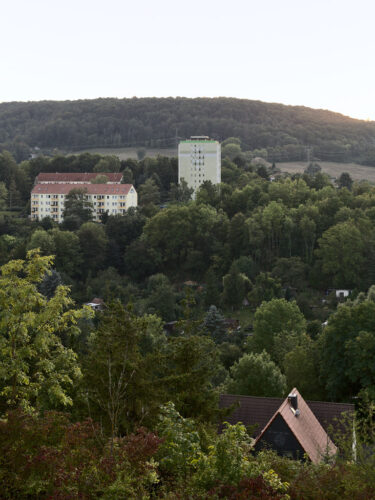
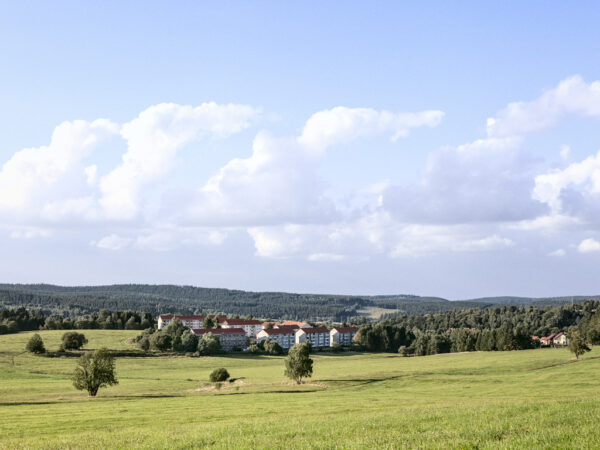
Assigned by Stiftung Baukultur Thüringen, I developed a photographic essay on life and living in Thuringia. My pictures will be on display in the exhibition »Plattform Wohndebatte« in the Neufert-Box in Weimar-Gelmeroda. The vernissage of the exhibition will take place on December 2nd, 2021.
More pictures of the project will follow soon.
https://baukultur-thueringen.de/plattform-wohndebatte/
Neufert Stiftung
Weimar Rudolstädter Str. 7
99428 Weimar-Gelmeroda / Germany
Softcover with Flaps, thread stitching, 220 x 280 mm
116 Pages, Offset
Design by Sven Lindhorst-Emme
Texts by Andreas Montag and Fabian Knierim
English translations by Michael Wetzel
Mitteldeutscher Verlag, Halle (Saale) / Germany 2015
ISBN 978-3-95462-411-9
Order Beyond Cold War at malenki.net
Beyond Cold War is also available at:
Buchhandlung im Haus der Photographie, Deichtorhallen Hamburg
Galerie Bohai, Hannover
Kunsthalle Bielefeld
Museum Marta Herford
Tique Artspace, Antwerp / Belgium
“[…] It was with more mistrust than hate that they confronted one another, spied on one another and listened in on the world of the other. Armed to the teeth with their weaponry, hoarding missiles and nuclear warheads in secret depots while fancifully elaborating upon the minimum amounts of time that a troop of soldiers would have to hold out inside their armoured box until the defenders had built up their front and brought the charging enemy to a halt. It would, of course, be the enemies (who else?) who would advance as aggressors — not those flying their own flag. According to place of residence, self-understanding and propagandistic wind direction, it was ‘the Ruskies’ or ‘American imperialism’ – the eternal adversary.
The latter still continued to manifest itself in the form of the ‘Bonn Ultras’ during the 1970s — a charming term, which has unfortunately gone entirely out of style and which, for members of later generations, might sound more like the hard-core fans of a Rhineland football club. Nonetheless, what was really at stake was class struggle, on the one side, and the defence of Western civilisation, on the other — that is, higher matters for which we were to slaughter one another, if necessary. What sounds like a childish and stupid game of cowboys and Indians was to be universally taken seriously. And it was taken seriously. How much money and how much imagination did it devour? And how many people did it warp and turn evil … […]”
published in: Beyond Cold War, Halle (Saale) 2014, ISBN 978-3-95462-411-9
”[…] Seine unter anderem an der norwegisch-russischen Grenze, an der ehemaligen innerdeutschen Grenze im Harz, in der Türkei und im Ostseeraum Dänemarks fotografierten Bilder sind von subtiler Suggestionskraft. Was ist hier passiert? Wo sind die Spuren des Konflikts? Oftmals finden wir keine, blicken auf Wälder, Gebirge und Seen, schauen auf sattgrüne Wiesen und sind dennoch beunruhigt. Dem 1981 in Jena geborenen Fotografen gelingt es, uns beim Betrachten der Bilder eine gehörige Portion Unbehagen einzuimpfen. Man fühlt sich beobachtet, ausgespäht, ausgehorcht. Aber da ist ja niemand mehr. Oder?
Einige Häuser stehen in der Landschaft herum. Mal führt ein Pfad über eine Wiese, mal ein Weg durch einen Wald. Doch auch diese Spuren des Menschen machen die Orte nicht zu Schauplätzen der Geschichte. Die Suche nach geheimen Unterständen, nach Bunkern, nach Abhörstationen ist umsonst. Warum? Es ist unser Blick, unsere Suche nach Verwertbarem, die Robert Schlotter interessieren. Jede Reifenspur nehmen wir als Indiz: Ja, genau! Hier ist damals etwas passiert! Könnte sein. Muss aber nicht.
Diese Fotografien entziehen sich: Sie sind nicht leicht lesbar – oder nur auf eine Weise: Diese nüchternen, wenngleich sehr genau komponierten Landschaftsbilder erzählen mehr über den, der sie anblickt, als über sich selbst. Sie machen die Erwartung des Betrachters zum Thema. Sie spiegeln einen erwartungsvollen Blick.”
published in: Kunstbuchanzeiger, March 2015 & Photonews, April 2015
“[…] Viel Wald und grüne Wiesen, Flüsschen und Wege sind auf den Bildern zu sehen. Wo sich im einzelnen Bild die Spuren des Kalten Kriegs verstecken, wird dem Betrachter nicht immer gleich klar sein. Und es gibt auch Bilder, die nicht wirklich Spuren zeigen, zum Beispiel das Seestück mit einem Ausschnitt graubraunen Meers bis an den Horizont. In vielen Fällen ist man auf eigene Assoziationen angewiesen. So wird vielleicht das Flüsschen zum früheren Grenzverlauf, der Waldweg ebenso. Die abgebildeten Zäune werden zu Resten von Grenzsicherungsanlagen, obwohl sie vielleicht in der Realität ganz anderen Zwecken dienten und dienen. So sehe ich die Bilder weniger als didaktische Abhandlung, die klar bestimmbare historische Begebenheiten und Orte illustriert, sondern viel eher als Aufforderung zum genauen Hinschauen und eigenen Assoziationen. […]”
“[…] Schlotter’s photographs only take effect at second glance. It is only through the context that they change from generic landscape photographs to a socio-political analysis with the conclusion that borders can run anywhere and at any time, that no structures are needed to separate countries and people.”
https://framesandfascination.com/2019/09/02/robert-schlotter-beyond-cold-war/
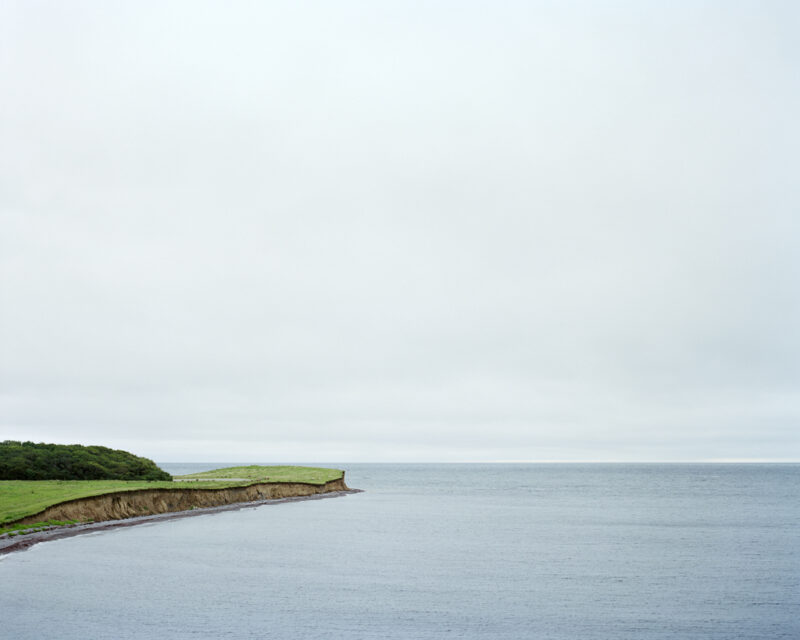
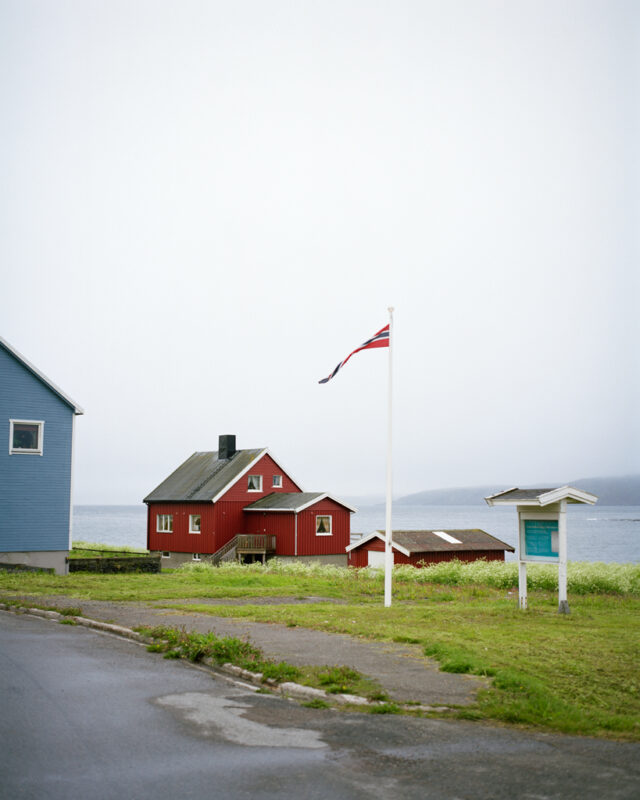
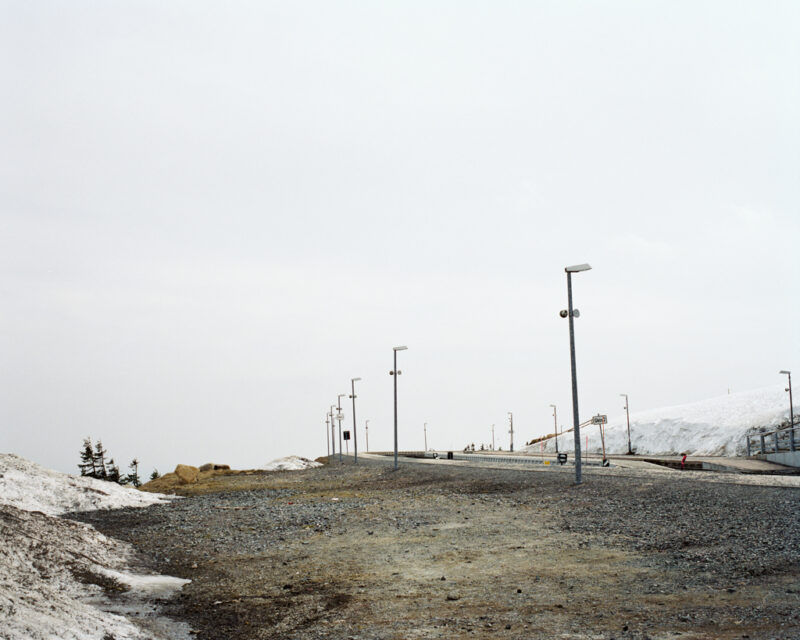
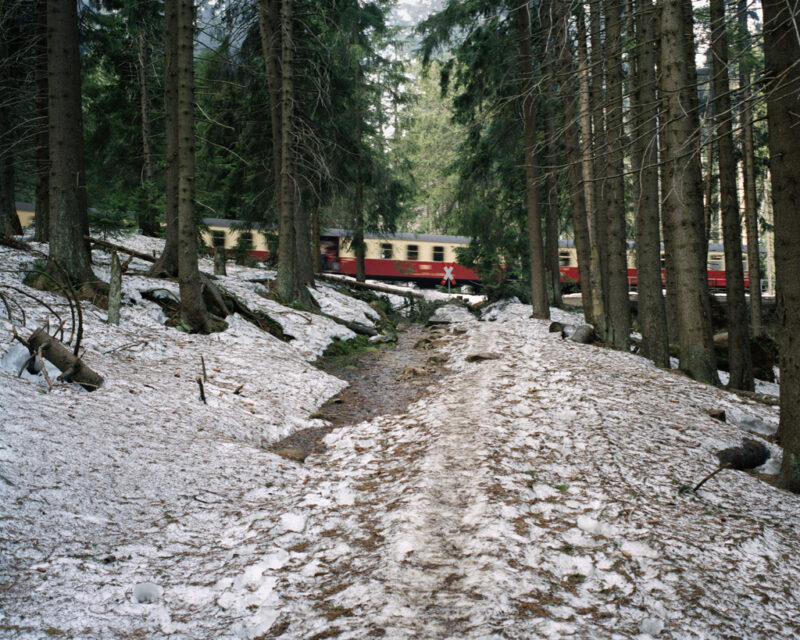
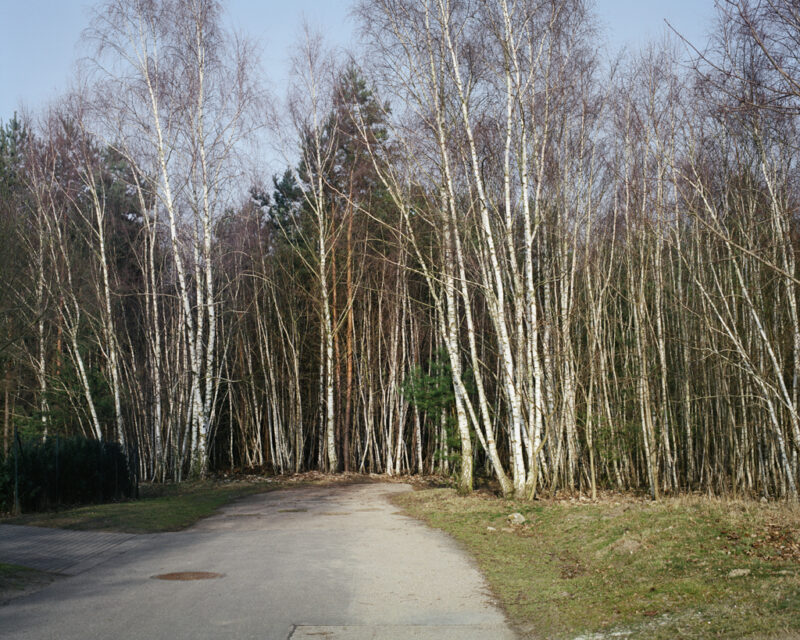
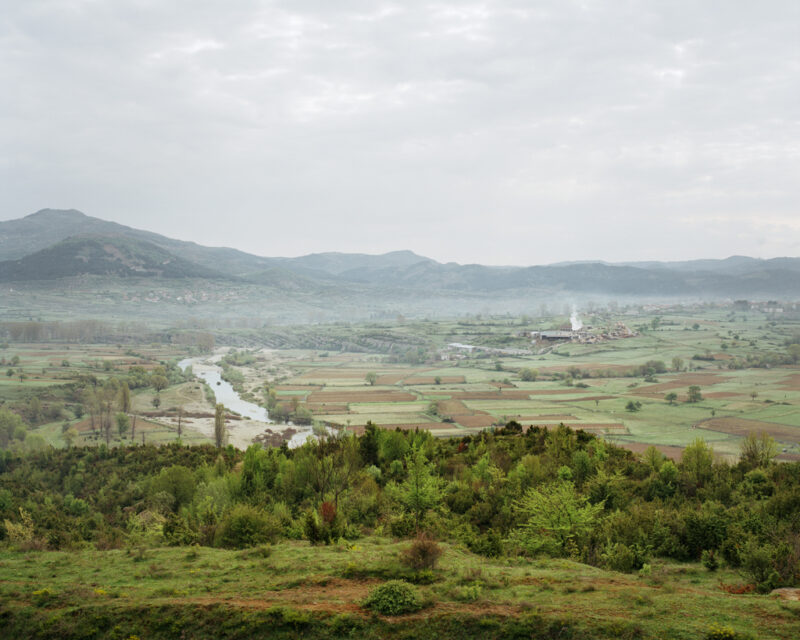
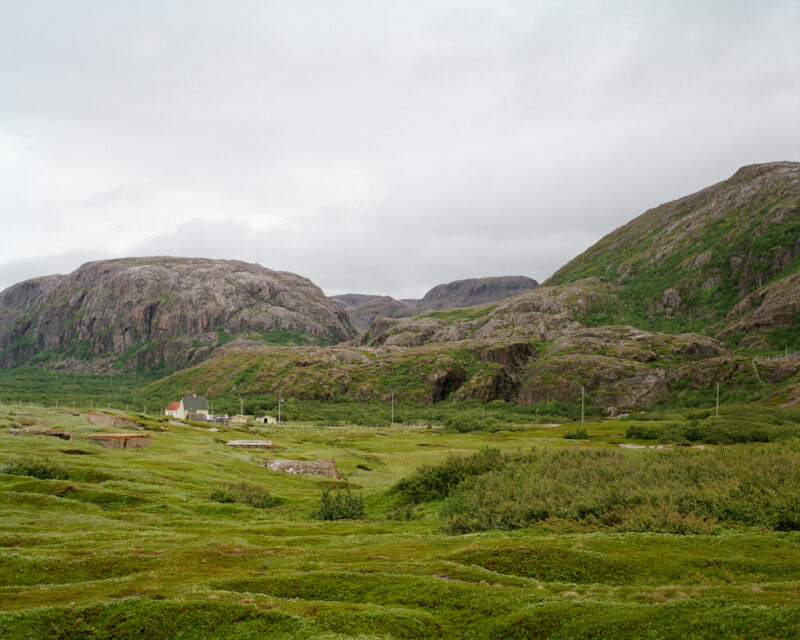
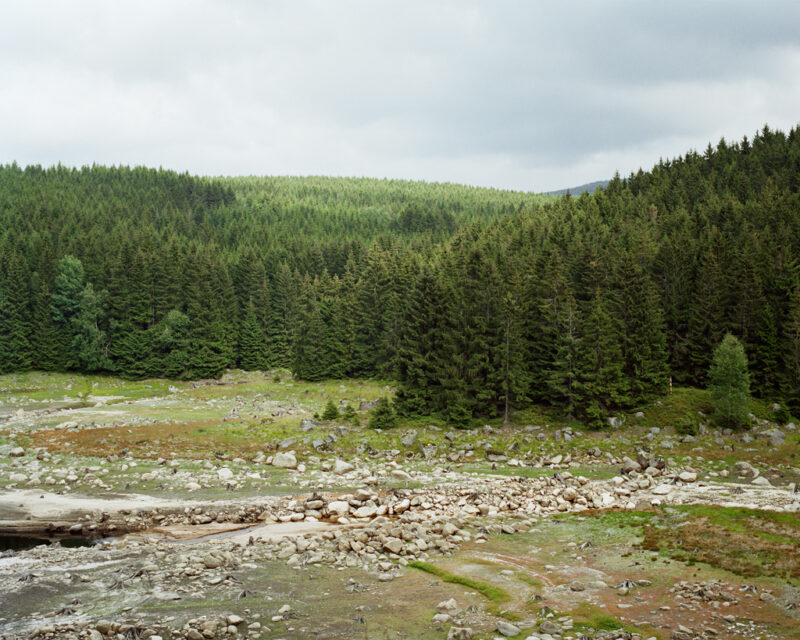
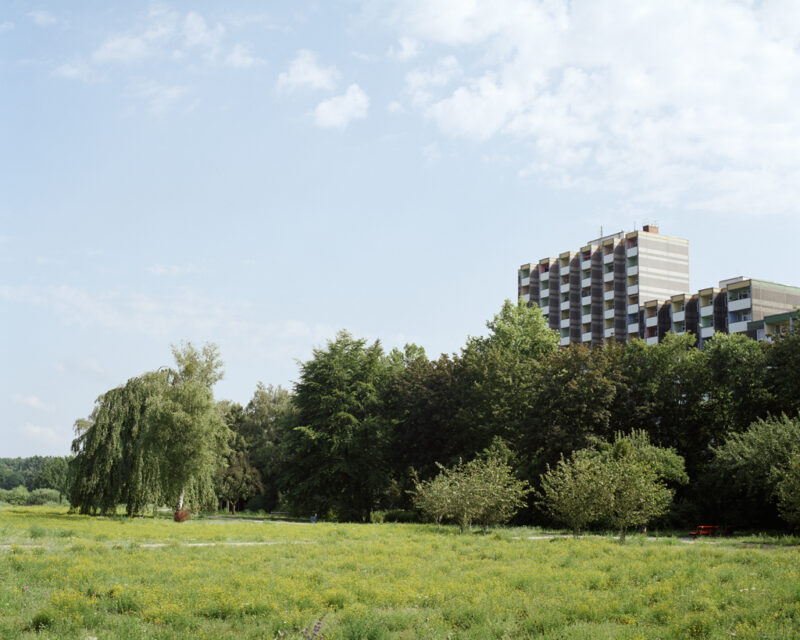
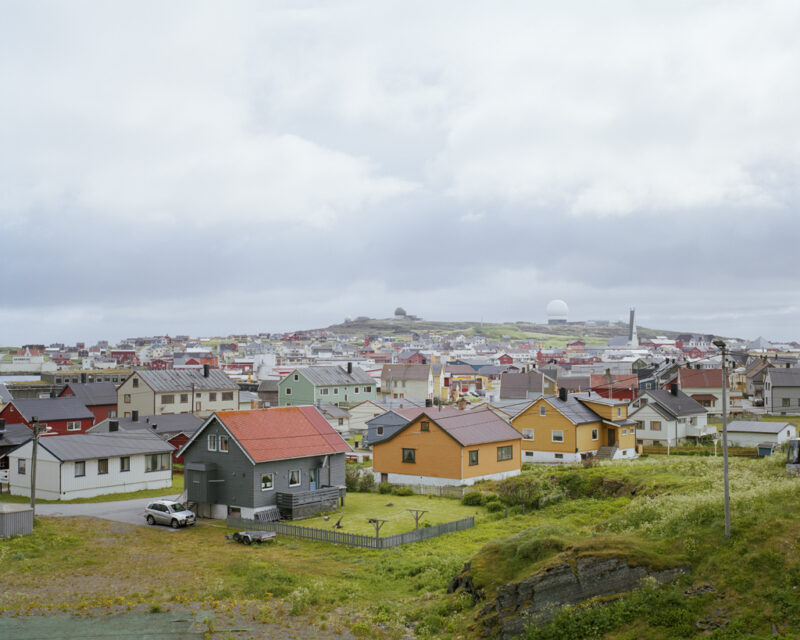
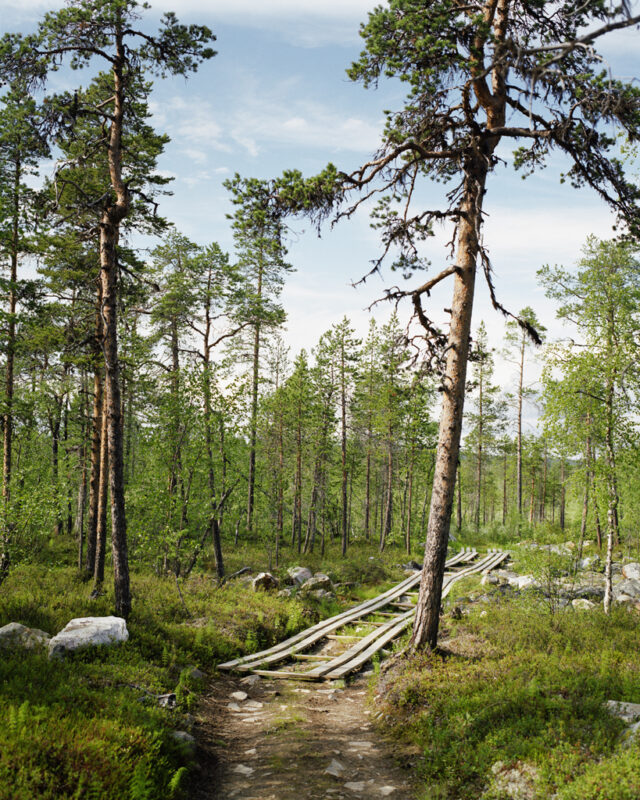
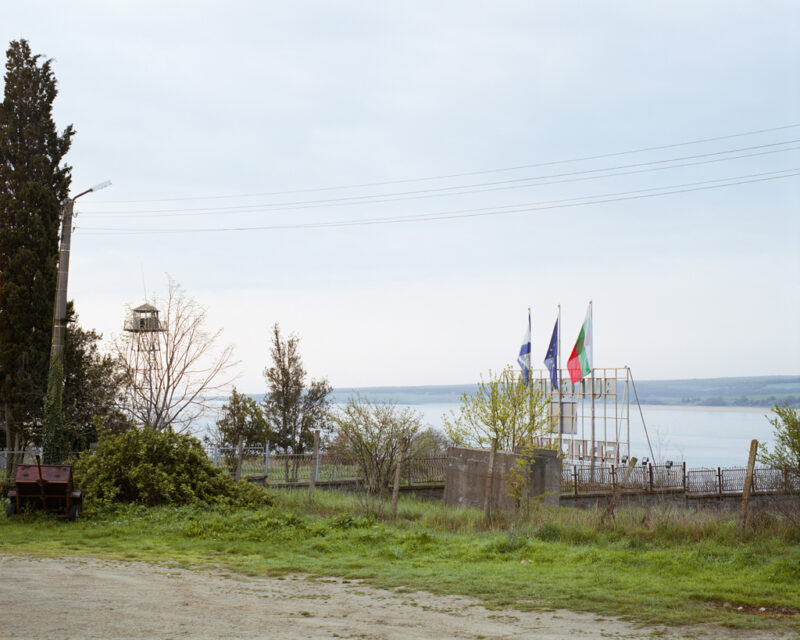
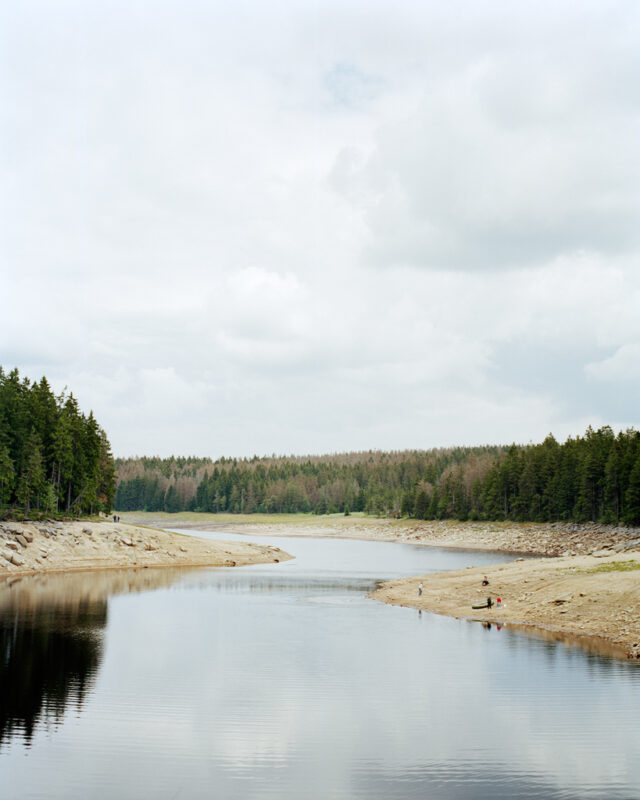
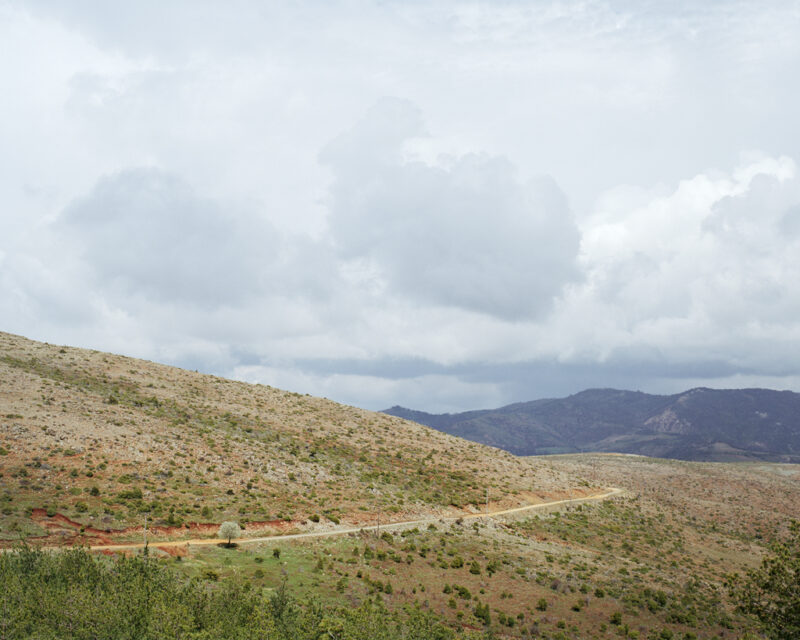
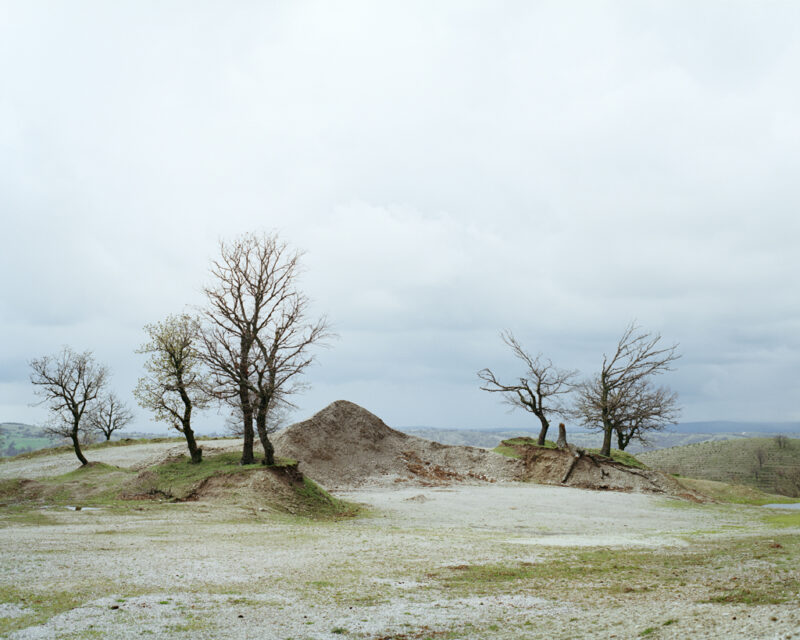
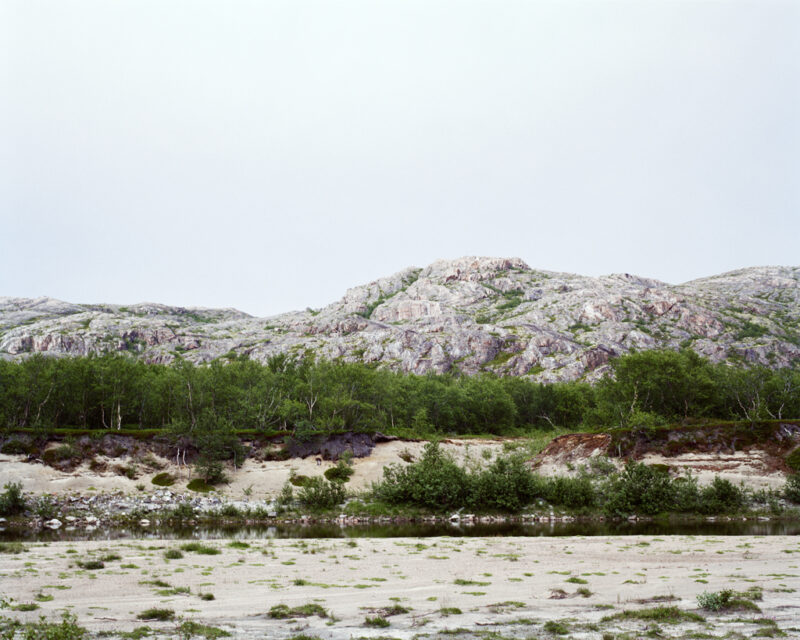
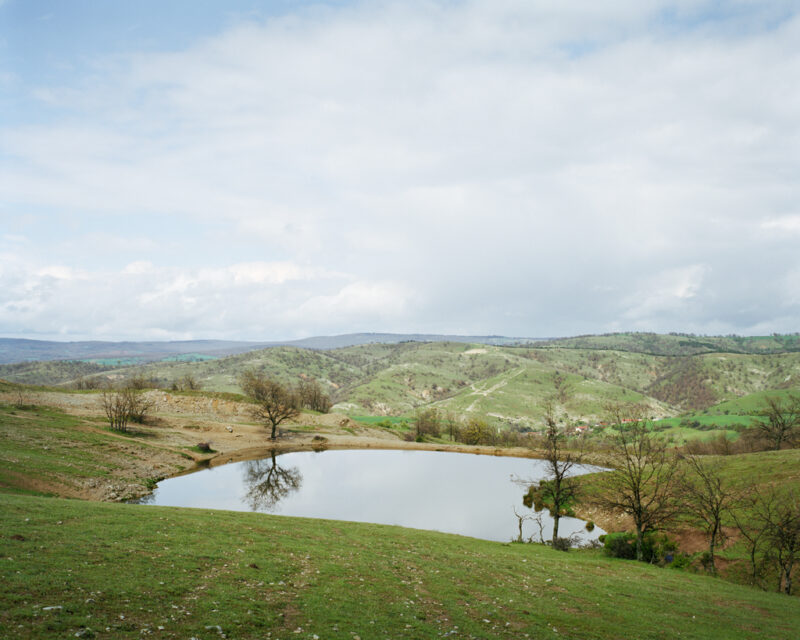
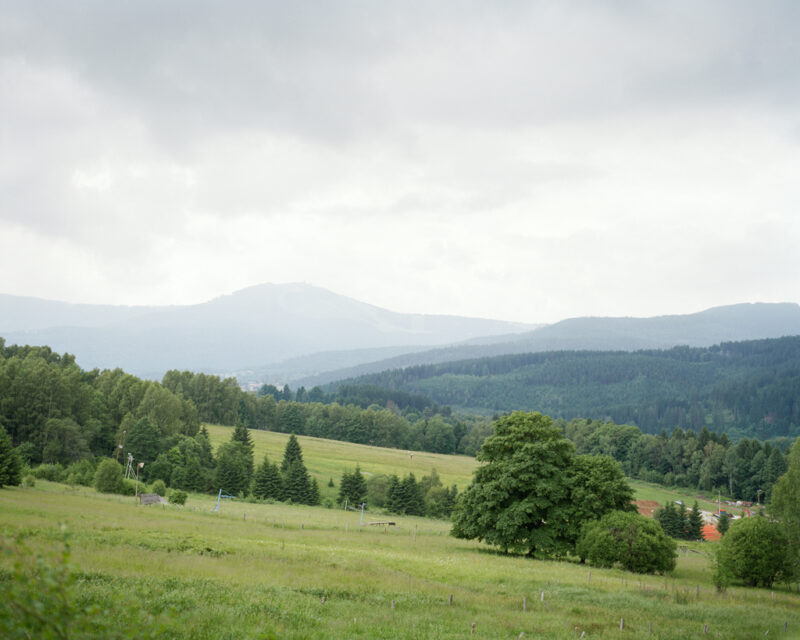
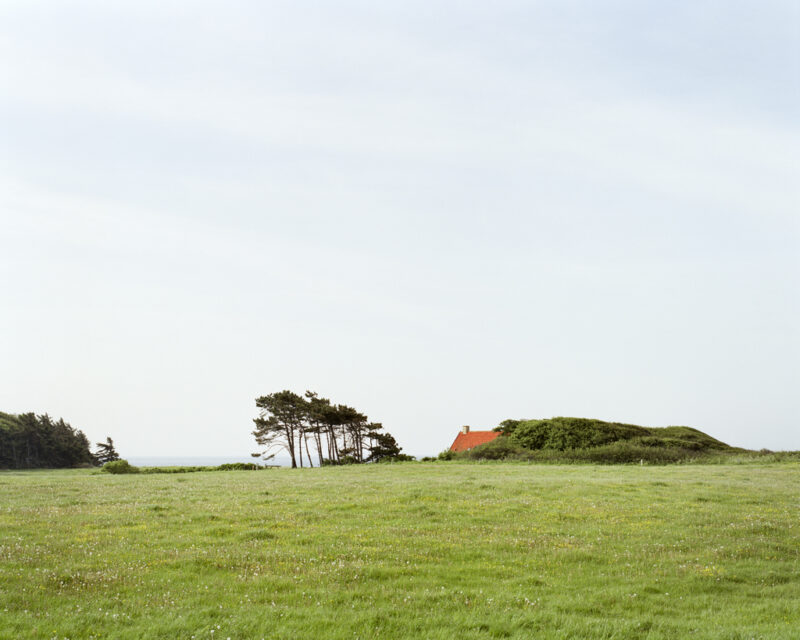
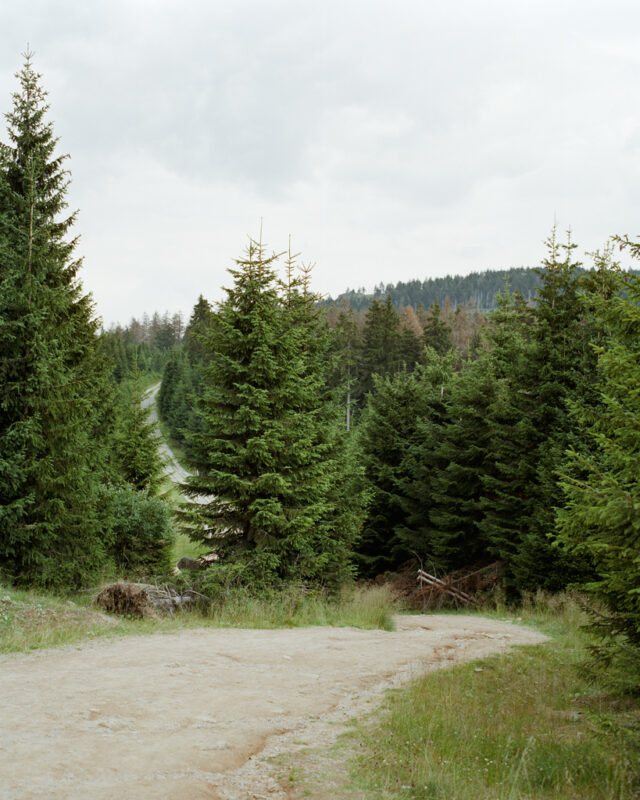
Beyond Cold War is based on the examination of confrontation areas of the Cold War in Europe. Border regions on which the NATO states and those of the Warsaw Pact stood face to face to each other.
During the Cold War the observers were always observed, too. The feeling of observing and simultaneously being observed, the assumed harassment through the antagonist, the alertness and awaiting (action and reaction) are the central starting points of my work. For both sides there was the question about the world behind the border, because both were stamped by massive cultural and political differences, laboured by analogous propaganda.
“[…] We also find ourselves dealing with sites of memory in the photographs of Robert Schlotter. The project’s premise identifies the landscapes in terms of sites where history has taken place and we instinctively set out in search of its remnants. The compositions of the images encourage us to do so. A path or a street often leads into the distance of the pictorial space and invites viewers to follow its course, to look for clues along the way and to make sense out of them. And we certainly do not end up emptyhanded. Thus, a dome-shaped building — perhaps a surveillance station — rises up above the wooden houses of a Scandinavian town. At the edge of a forest path, we seem to recognise the remnants of anti-tank barriers; half-buried pieces of concrete make us think of the ruins of bunkers. However, the clues are rarely so unambiguous that we can be certain of their significance. Do the tyre tracks leading into the forest mark the path of a border patrol? What is to be made of the structure on top of the garage with the yellow door? Is the barbed wire fence in a clearing the remains of a secured border or just a fence surrounding a piece of land? It looks too formidable for the latter, but seems almost ridiculously inadequate for the former. Is this supposed to be the Iron Curtain? At the places where the representatives of two systems spent decades suspiciously eyeing one another, our gaze becomes paranoid itself. […]”
published in: Beyond Cold War, Halle (Saale) 2014, ISBN 978-3-95462-411-9
“[…] Schlotter’s photographs only take effect at second glance. It is only through the context that they change from generic landscape photographs to a socio-political analysis with the conclusion that borders can run anywhere and at any time, that no structures are needed to separate countries and people.”
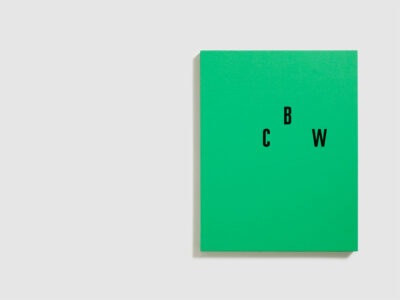
150,00 €
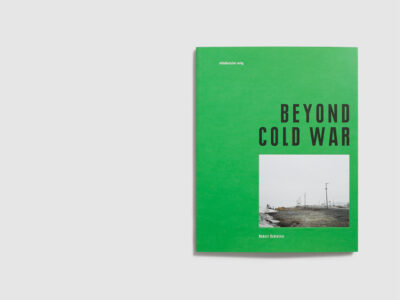
24,95 €
printrun: 59 + 2 copies, numbered & signed
Softcover with Flaps, thread stitching, 220 x 280 mm
116 Pages, Offset
Design by Sven Lindhorst-Emme
Texts by Andreas Montag and Fabian Knierim
English translations by Michael Wetzel
The collectors edition of Beyond Cold War appears as the originally softcover book in a silkscreen printed and handmade slipcase. Each copy is numbered and signed and includes one of 59 varying inkjet prints (240 x 200 mm).
Order the Beyond Cold War — Collectors Edition at malenki.net
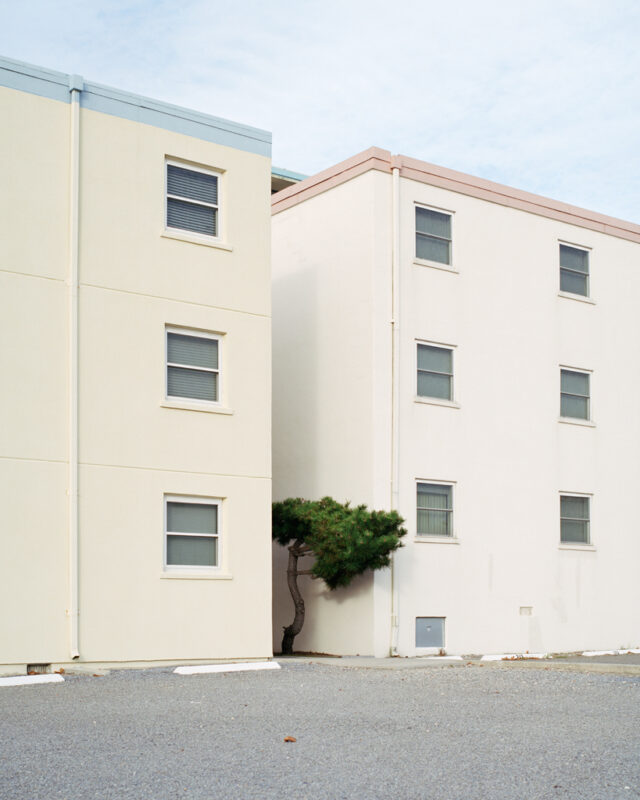
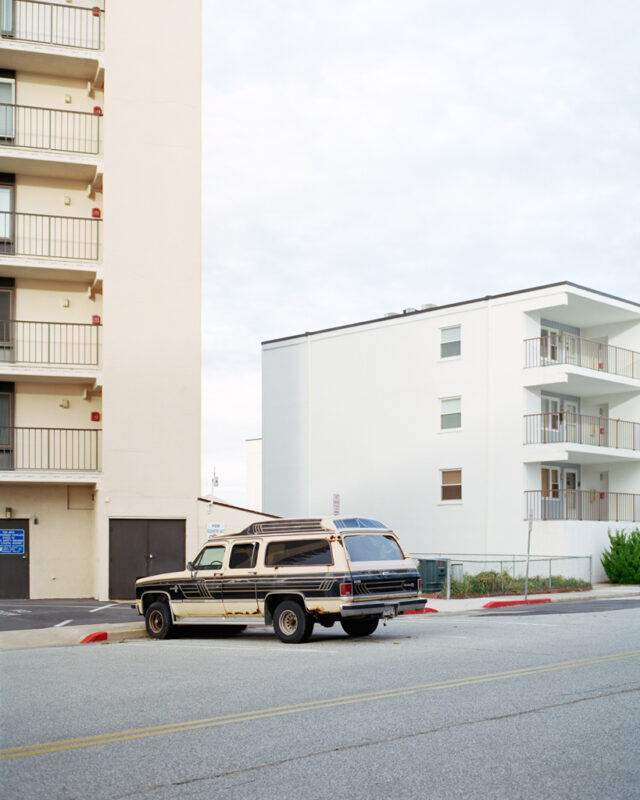
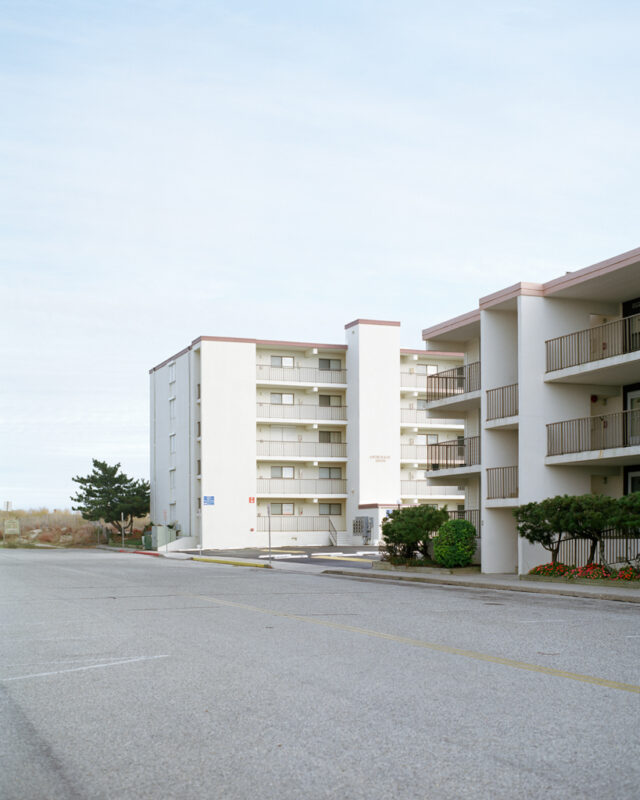
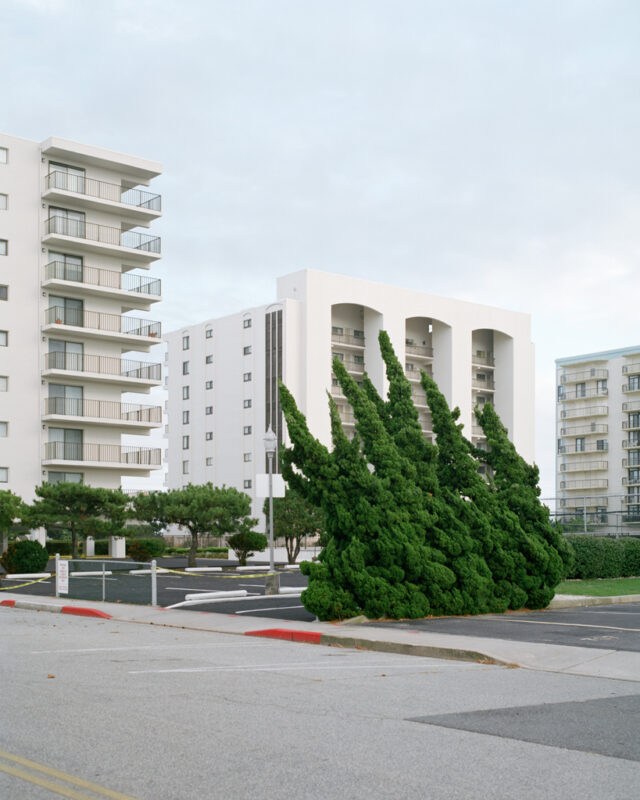
Pigment prints from ‘Ocean City’ can be ordered via my shop
In Memories and how to get them I am dealing with the sequence of assumeing, feeling and reflecting, with the construction of memories and finally own reality. There’s not only ›one‹ reality. In cause of subjectively views on environment through each one of us, there is just a subjectively image of it existing. Each ones reality is a construct of different personal experiences and influences. The individual reality goes together with memories, which are a construct for their part.
The sense system does allways take only a limited cut out of the surrounding environment. At the same time it tries to get a coherently image of this environmet. The brain is using an assemblytechnique or the principle of construction to get this ›overall view‹ by fragments (which are not necessarily depending on the truth). So there is for example in philosophy since always an inseparableness of memoria/reminiscentia and imaginatia. That means the transition from reality to fiction and reverse is vaguely. In that way the memory pictures become an important role, because they are the figurativy representation of the experienced one in memory consciousness. Next to the mental pictures of happenings there are physical pictures (produced by using a camera, moviecamera, etc.) existing, which also find a representaion in memory and will be linked with the accordingly event.
I will start where the mental pictures come to an overlay with the mental representation of the physical ones. A view on memories and autobiographical memory, which means in consequence ones own truth, as a construct of latently fragmentary pictures. The noema of photography ‚it was like that’ (Roland Barthes) does not apply for the pictures in the memory consciousness.
From ‘I was here’ by Michèle Walerich
published in: Tourists & Nomads Marburg 2012, ISBN 978-3-89445-464-7
“Memories and how to get them raises the question about the latent, fragmentary nature of photography. On the one hand, its shifting between reality and fiction and vice versa gives rise to a quasi-infinite participative narrative. On the other hand, the awareness of the diversity of potential openings to representation stresses the impossibility of one absolute literal image and sharpens our critical reception and the way in which we deal with images. This topic is even more relevant when photography is used as a means to reflect upon the past and on collective remembrance. Contrary to popular opinion, memory is not a stable reservoir, but is shaped by the very act of recollection. Each alteration in world view involves new means of constructing it.”
Excerpt from the essay «Beyond Irony» by Daniel Neugebauer
published in: The Space Beyond, Bielefeld 2014, ISBN 978-3-9812239-4-1
“[…] Definitely, Schlotter feels an urge to avoid a sweet and superficial melancholia of the omnipresent Instagram images or Lana del Rey music videos with their pretend-historicism. He creates hyper-images to counter hyperrealistic aesthetics. They are successful because they take on responsibility for the presented. They don’t celebrate the broken down distinction between what is true and what is not. Instead, they show the mechanism of our memory as a source for image production. […]”
Excerpt from the essay «The Space Beyond» by Katharina Bosse
published in: The Space Beyond, Bielefeld 2014, ISBN 978-3-9812239-4-1
“[…] The announcement of something about to end is what captures my gaze in Robert Schlotter’s images. The long exposure photographs of old-fashioned amateur movies fragment time in a different way than Cartier-Bresson‘s reflex action shots. Schlotter‘s photographs appear to be passive repositories in which the moving image is caught. Movies coagulated into photography, losing their dimension of time; what is left on the surface is the light of the projection lamp, bordered by a dark frame. The images in Memories and How to Get Them, with their eerie quality of a ghostly road trip, make me think of the passing of time, the death of Roland Barthes. […]”
printrun: 10 + 2 copies, numbered & signed
loose leaf edition, 160 x 122 mm
22 sheets, inkjet prints on Hahnemühle paper
2011
Order the Memories and how to get them — Collectors Edition at malenki.net
Hardcover, thread stitching, 210 x 230 mm
80 Pages with 35 duotone plates, Offset
Text by Alexander Kriwat
Mitteldeutscher Verlag, Halle (Saale) / Germany 2009
ISBN 978-3-89812-663-2
Order Halle-Silberhöhe via amazon.de or booklooker.de
Between 1979 and 1989 Halle-Silberhoehe was built in panel construction as a new living-quarter in the south of Halle (Saale) / Germany, because workers were needed in the closley situated chemical industry. On an area of two square kilometers 15,000 prefabricated flats were built for about 39,000 people.
After 1989 there were a lot of changes on the markets of jobs and housing. High unemployment, social exsolution and vacancy came up. Since the middle of the 1990’s the quarter lost more than the half of its inhabitants. Because of the drastic vacancy, the quarter now will be deconstructed – partly selective, partly in whole areas. On the accrued waste land should be afforested.
I was living in the city of Halle for about one year to document the architecture and the people who were still living there.
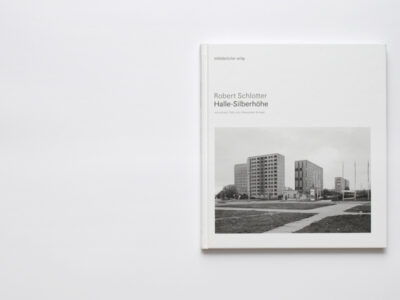
20,00 €